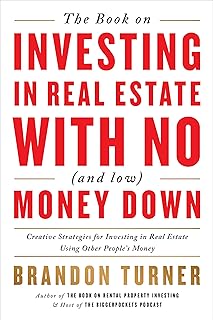In the realm of real estate, the concept of value creation can be likened to a multi-layered cake, where various factors influence the market’s dynamics. While the interplay between supply and demand is crucial, other elements like interest rates, economic conditions, investor behavior, and regulatory changes also contribute to shaping property values.
When any of these layers undergo a shift, the repercussions are felt across the market. For instance, government incentives such as tax credits can spur buying activity and lead to temporary price increases. Similarly, adjustments in interest rates can impact affordability and drive up competition among buyers, thereby influencing property values.
Recent developments, such as the relaxation of lending guidelines by institutions like the FHA, introduce new dimensions to the market. By expanding the pool of eligible buyers, such changes can help absorb excess inventory and stimulate demand, thereby affecting overall market dynamics.
As the real estate landscape evolves, it’s essential to recognize the intricate web of factors that contribute to value fluctuations. From economic trends to financing practices, each layer of the market plays a distinct role in shaping the trajectory of property values.
Reflecting on past market cycles, it becomes evident how external influences, like lax lending standards and speculative behavior, can lead to unsustainable growth and subsequent corrections. By learning from historical trends, stakeholders can gain insights into the underlying forces that drive market behavior.
Looking ahead, the focus shifts to maintaining a balance between market forces and economic fundamentals. While low interest rates have supported housing affordability, a sustainable market relies on factors beyond monetary policy, such as income growth and employment stability.
Amidst ongoing market shifts, the role of lenders in shaping market conditions cannot be overlooked. By adapting underwriting standards and financing options, financial institutions wield significant influence over buyer behavior and property values.
As the real estate market continues to evolve, stakeholders must remain vigilant to emerging trends and external factors that could impact property values. By understanding the multi-faceted nature of the market, industry professionals can navigate changing conditions and make informed decisions.
In conclusion, the analogy of a multi-layered cake aptly captures the complexity of the real estate market, where diverse factors interact to shape value dynamics. By delving into these layers and understanding their interplay, stakeholders can gain a deeper appreciation of the market forces at play.
📰 Related Articles
- Queensland Real Estate Market Surges Amid Changing Dynamics
- Unveiling the Terrifying Truth Behind a Real Ghost Story in Saginaw
- Unveiling the Moral Battleground: A Real Ghost Story at Udine Far East Film Festival
- Unveiling the Haunting Truth Behind a Real “Ghost Story” in Alec Baldwin’s “Rust
- Sawyer Yards Market Spurs Houston Real Estate Revitalization






